Compaction of concrete

Placing and compaction:
The following points are considered while placing and compaction of concrete over roof slab and in beams.
- Always use chutes lesser than 4.5 m in length or angle of inclination at 45° to horizontal in order to pour concrete.
- Fill concrete to the required depth only and vibrate it until the entrapped air inside concrete is released.
- First Pour concrete into beams and then over the slab portion.
- Beams having more than 500 mm depth, concrete to be done in layers. By adopting this, for each layer, good compaction of concrete can be achieved. Columns, beam, slab level of the concrete top should be pre-marked before starting of concreting works.
- Checking the slab levels are very important, before and during concreting with line thread method and also with Dumpy level. Suitable adjustable Level Gauges can be used as reference marking for the required depth of concrete, made from good quality MS bright bars is highly advisable.
- It is always recommended to use appropriate needles for vibration depending on the aggregate size, reinforcement spacing and concrete element. Hence, for bigger size footings use a 60 mm needle for compaction of concrete, for medium size footings, columns and slabs use a 40 mm needle, and for starters and precast lintels use a 25 mm needle for compaction of concrete.
- Caution: Over vibration for concrete is very bad, gives horrible results in leakages of concrete slurry. Therefore gentle vibration for each layer is necessary, but don’t go for vibrating the concrete again, which was already vibrated and compacted.
- Always Use wooden mallet with gentle ramming, so as to form slurry on top of the concrete surface, which indicates the uniform compaction of concrete with even packing.
- Immediately after concreting clean the surfaces of shuttering works, wherever spilled concrete found.
- Leave vertical construction joints after consultation with the structural engineer.
- All surfaces of shuttering like beam and slabs shall be moistened with water sprinkling before placing of concrete to reduce water loss due to absorption.
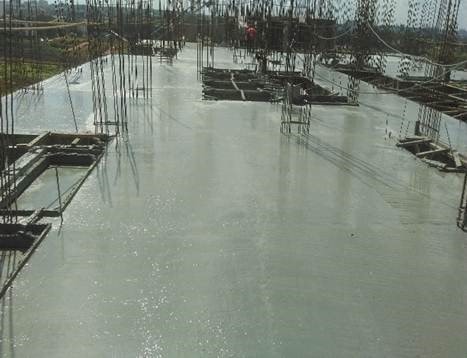
Curing:
- After 3 hours of concrete done, Roof Slab should be sprayed with water including hessian cloth covering, i.e. initial setting is over and ensures that hessian cloth will remain wet till the next day for stagnating water in mortar bunds.
- Before starting Curing for roof slab, a cement mortar bund to be built over it, the next day, and keep water standing for 7 days at a stretch.
- For sloped roofs, cover it with a hessian cloth and keep it moist throughout.
Caution: Do not ignore curing of the roof slab for the sake of column starters marking
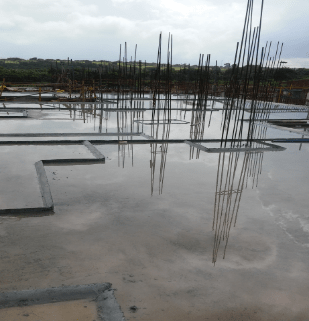
Columns, walls and starter:
- Shuttering can be removed the very next day, and wrap all concrete surfaces with moist hessian cloth, after spraying with water, to reduce the heat of hydration.
- The walls and columns should be cured for a minimum period of 7 days, and 3 days for Starters.
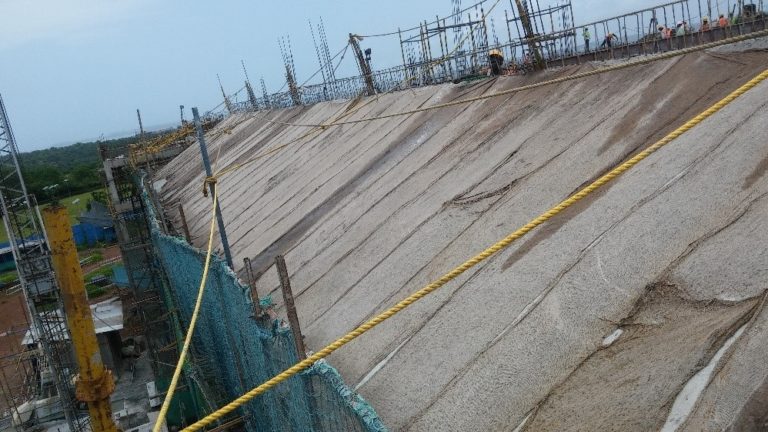
Bond new concrete to previously poured or old concrete:
- As far treatment for the joint b/w old and new concrete is concerned, If the previous pour was more than 4 hours prior but less than 30 days, then expose concrete aggregate with wire brush and wash with clean water.
- If the joint is more than a month old use bonding agents as per manufacturer’s instructions and specifications.

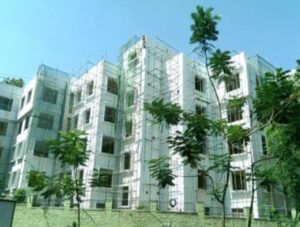

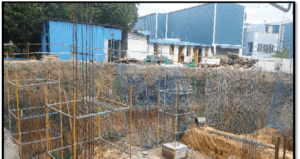
Amazing post, thank you for sharing this knowledgeable post, really this is very helpful.